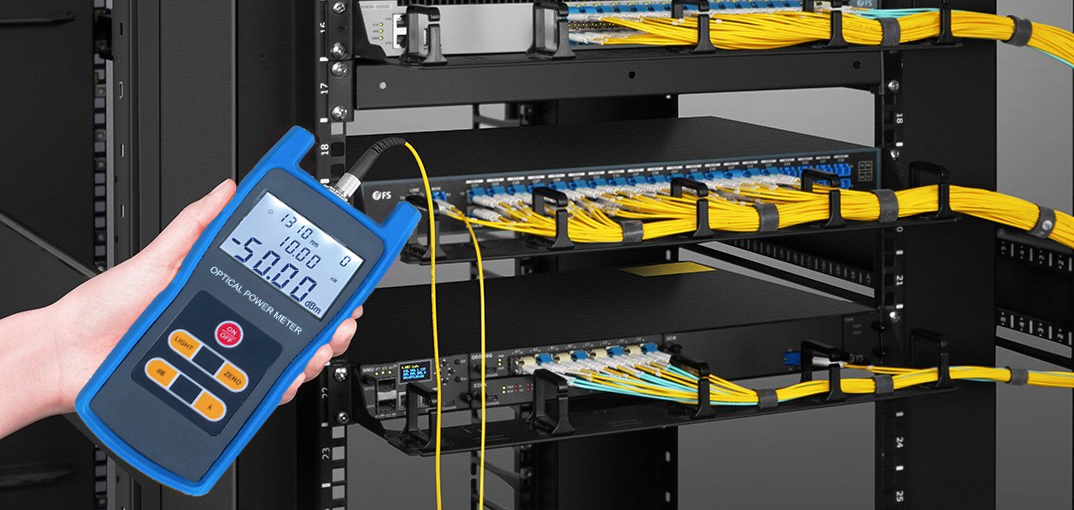Ofda is essential for accurate fibre measurement in multiple applications.
Exploring the Benefits of Optical Fibre Testing for Boosted Interaction Solutions
The importance of optical fiber testing in modern communication systems can not be overstated, as it offers as a structure for making sure network integrity and performance. This aggressive testing strategy has profound effects for signal quality and functional performance, increasing the inquiry of how these methods add to long-lasting sustainability in an ever-evolving technical landscape.
Importance of Optical Fibre Screening
The relevance of optical fibre testing can not be overemphasized in today's data-driven environment. As organizations increasingly count on high-speed data transmission for daily procedures, the integrity and performance of optical fibre networks are vital. Testing guarantees that these networks can support the huge quantities of data generated and transferred seamlessly, cultivating reliable interaction and connection.
Optical fiber screening offers numerous critical functions, including confirming setup high quality, determining prospective mistakes, and figuring out total system efficiency. Normal screening can protect against pricey downtimes and solution disturbances, permitting companies to keep functional connection. In addition, it aids in compliance with market standards and regulations, ensuring that fiber optic installments satisfy needed specs for security and reliability.
In addition, testing can enhance the long life of fiber optic systems. By proactively determining issues such as signal loss, depletion, or port failures, companies can attend to problems before they rise, hence prolonging the life of their facilities. In summary, optical fiber screening is not simply a technical requirement but a tactical investment that boosts network reliability, maximizes efficiency, and ultimately sustains the development and effectiveness of modern-day communication systems.
Trick Examining Techniques

OTDR is a vital strategy used to recognize faults, step splice losses, and analyze the overall honesty of a fibre optic link. By sending a pulse of light down the fiber and evaluating the mirrored light, service technicians can pinpoint places of mistakes and review the network's performance over lengthy ranges.
Insertion loss testing determines the quantity of signal loss that occurs when light passes with a link or splice. This method is important for validating that links fulfill specified loss thresholds, which is vital for keeping optimum efficiency in communication systems.
Optical return loss testing measures the quantity of light mirrored back in the direction of the source because of blemishes in the fibre or links. High return loss worths show far better efficiency and lowered signal degradation.
Together, these testing techniques supply a comprehensive analysis of fiber optic networks, guaranteeing their integrity and capability in varied interaction applications.
Influence on System Efficiency
Efficient optical fibre testing directly influences the overall performance of communication systems. By guaranteeing the stability of fibre optic cords, testing determines potential faults such as depletion, splice loss, and adapter imbalance. These problems can considerably deteriorate signal quality, resulting in disruptions and decreased information transmission rates.

Moreover, normal optical fibre screening contributes to lasting system sustainability. It enables very early detection of deterioration, permitting for timely upkeep and upgrades before major failings occur. This not just prolongs the life expectancy of the framework but likewise ensures that communication systems continue to be competitive in terms of efficiency.
Cost-Effectiveness and Efficiency
Cost-effectiveness is a vital consideration in the implementation and upkeep of optical fibre networks. Applying robust optical fiber screening treatments can considerably minimize functional prices by identifying problems prior to they rise into major issues. fibre testing equipment. By detecting faults, attenuation, and various other efficiency hindrances early, organizations can prevent pricey repairs and downtime, which can disrupt services and cause profits loss
Furthermore, efficient screening methods enhance the installation procedure, enabling service technicians to function much more efficiently. This converts to reduce labour costs and faster task completion times. Advanced screening devices, such as Optical Time Domain Reflectometers (OTDRs), enables a specific evaluation of fibre quality, making certain that just ideal materials are made use of, thus minimizing waste.
Normal testing additionally contributes to far better resource appropriation. By comprehending the network's performance, companies can make informed choices about upgrades and growths, ensuring that financial investments are made where they are most needed. In recap, optical fibre testing boosts cost-effectiveness and efficiency, sustaining the long-term sustainability and competitiveness of interaction systems in a progressively requiring market.
Ensuring Long-Term Dependability
Implementing extensive optical fiber testing not only boosts blog here cost savings and functional efficiency yet also plays a critical duty in ensuring the long-lasting integrity of interaction networks. Regular testing methods, consisting of depletion and bandwidth assessments, assistance recognize possible degradation in fibre performance before it causes solution disturbances.
By employing sophisticated screening techniques, network drivers can pinpoint faults or weaknesses in the fibre facilities, enabling for prompt remediation. This proactive method reduces downtime, making sure that interaction systems continue to YOURURL.com be useful and reliable. Routine testing contributes to the development of a more resilient network, as operators can adapt and maximize their infrastructure based on real-time data insights.
Additionally, ensuring compliance with sector standards through optical fiber screening enhances the top quality and stability of the entire communication system. This adherence not just strengthens self-confidence among stakeholders but also straightens with governing demands, which are progressively stringent.
Conclusion
Finally, optical fibre testing works as a basic element in enhancing interaction systems. By using different testing approaches, such as OTDR and insertion loss analyses, networks can achieve optimum efficiency and reliability. The aggressive recognition of mistakes not only boosts signal high quality but likewise decreases downtime, inevitably adding to cost-effectiveness and operational performance. Adherence to industry criteria cultivates stakeholder self-confidence, ensuring the long-term sustainability of interaction facilities in a progressively data-driven landscape.